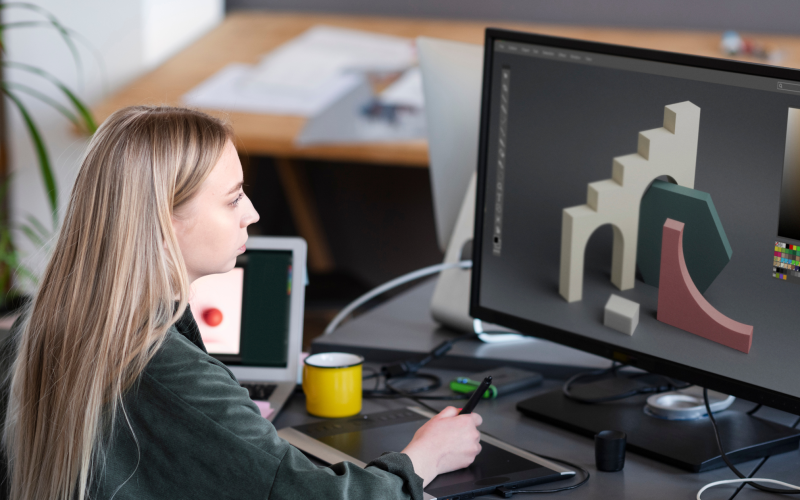Building a 3d product configurator services the right way means blending user experience, performance, and technical scalability into a tool that both delights customers and supports business needs. Whether you’re building for fashion, furniture, automotive, or electronics, the approach should be strategic. Here’s how to do it best:
1. Start With a Clear Objective
Before diving into technology or design, clearly define what your configurator is meant to achieve. Is it to drive eCommerce sales, support dealers with complex quoting tools, or just visualize product variations? Different goals require different levels of complexity, integration, and design. This step helps align stakeholders, set measurable KPIs, and avoid scope creep. A configurator for customizing T-shirts will differ vastly from one for modular sofas or industrial machinery. Be specific: what can users change, and why? What’s the ideal outcome? Having a clear purpose early on sets a strong foundation for everything that follows.
2. Know Your Audience and Their Needs
A great configurator puts users first. Understand who your users are, their technical comfort level, and how they interact with your product category. Are they designers, general consumers, or sales reps? What devices do they use most—mobile, desktop, tablets? Do they expect quick presets or granular control? For instance, B2B users may need quote generation and CAD downloads, while B2C shoppers want a simple and beautiful UI. Conduct surveys, interviews, or competitor analysis to identify usability patterns. Tailoring the configurator to user expectations improves satisfaction, reduces friction, and increases the likelihood of conversions or engagement.
3. Use Modular and Scalable Architecture
The best configurators are built to grow. Using a modular architecture allows you to add or update features without rebuilding the entire system. Modular design also simplifies the addition of new products or components. For example, treat colors, materials, and accessories as data-driven modules rather than hardcoded elements. This also applies to the tech stack—use microservices or headless CMS for logic and content delivery. Building with scalability in mind ensures your configurator doesn’t become obsolete or difficult to maintain as your product line evolves or customer expectations change.
4. Choose the Right 3D or 2D Rendering Engine
Not every configurator needs 3D, but if visual realism is essential, choose a rendering engine that fits your needs. For web-based applications, Three.js is a flexible and lightweight library with strong community support. Babylon.js offers an all-in-one rendering solution, while Unity WebGL is better suited for game-level interactivity but requires more resources. For simpler configurators (like T-shirts or posters), 2D engines like Fabric.js or Pixi.js might be enough. Evaluate trade-offs between quality and performance—3D adds realism but requires more optimization and heavier asset management. Your product type and user expectations should guide this decision.
5. Prioritize Performance and Load Speed
Users abandon slow-loading configurators. Performance should be a top priority from the start. Optimize your 3D models—keep polygon counts low and use compressed textures (e.g., KTX2, WebP). Implement lazy loading, progressive rendering, and loading spinners to reduce perceived wait times. Minify code and assets, and use a CDN to deliver models and textures faster. Especially for mobile users, test thoroughly on various devices and network conditions. Avoid overengineering—only load what’s needed based on user interaction. A lightning-fast configurator is more than a technical win—it directly impacts conversion rates and user satisfaction.
6. Build a Clean, Intuitive UI
A configurator’s interface should guide users naturally without overwhelming them. Use clear labels, logical grouping, and progressive disclosure to manage complexity. For example, hide advanced options under collapsible menus and show only relevant choices as the user makes selections. Visual feedback is crucial—when users change something, update the preview instantly. Use tooltips, color swatches, thumbnails, and micro-interactions to keep users oriented. Follow responsive design principles to ensure smooth behavior across devices. A clean, frictionless UI encourages users to explore more options and complete their configurations, increasing the likelihood of conversion or lead generation.
7. Implement Business Logic and Rules Engine
Behind the scenes, your configurator should enforce rules to ensure only valid combinations are allowed. For example, selecting a certain fabric may disable incompatible accessories or materials. These rules can be hardcoded for simple cases or managed through a backend logic layer or product information management (PIM) system. Advanced setups may use constraint-solving engines or visual logic builders. This prevents user errors, reduces support queries, and ensures orders are always manufacturable or in-stock. Keeping your logic layer modular and editable (via CMS or admin panel) is ideal for long-term maintenance and flexibility.
8. Offer Real-Time Pricing and Add-to-Cart Integration
An effective product configurator ties directly into your eCommerce or ordering system. Showing real-time pricing as users make selections increases transparency and reduces abandonment. Connect your configurator to pricing APIs, tax calculators, or discount engines to reflect accurate totals. For transactional workflows, include “Add to Cart,” “Download PDF,” or “Request Quote” options. These actions should carry over the full configuration data, which can be done using URL parameters, JSON payloads, or custom backend logic. A seamless transition from customization to checkout turns your configurator from a cool feature into a core revenue-generating engine.
9. Enable Sharing, Saving, and Analytics
A great configurator doesn’t just engage—it drives word-of-mouth and insights. Add functionality for users to save their configuration, share it on social media, or email it to others. This is particularly valuable in collaborative or gift-based purchases. Also, implement analytics tracking to monitor how users interact with the configurator—what features are most used, where users drop off, and which configurations convert. Tools like Google Analytics, Mixpanel, or custom events logging can provide insights for continuous improvement. Sharing also increases visibility, making the configurator a marketing tool as well as a sales utility.
10. Test Thoroughly and Gather Feedback
The final key to building the best product configurator is constant iteration. Test across browsers, screen sizes, and user types. Perform usability testing with real customers to catch UX issues early. Validate that all business rules, pricing, and outputs function correctly under edge cases. Gather feedback after launch using surveys or feedback widgets. Even after launch, treat your configurator as a living product—regularly add features, optimize loading times, fix bugs, and adapt to new business needs. The best configurators evolve over time based on real-world usage, data, and customer feedback—not assumptions alone.











